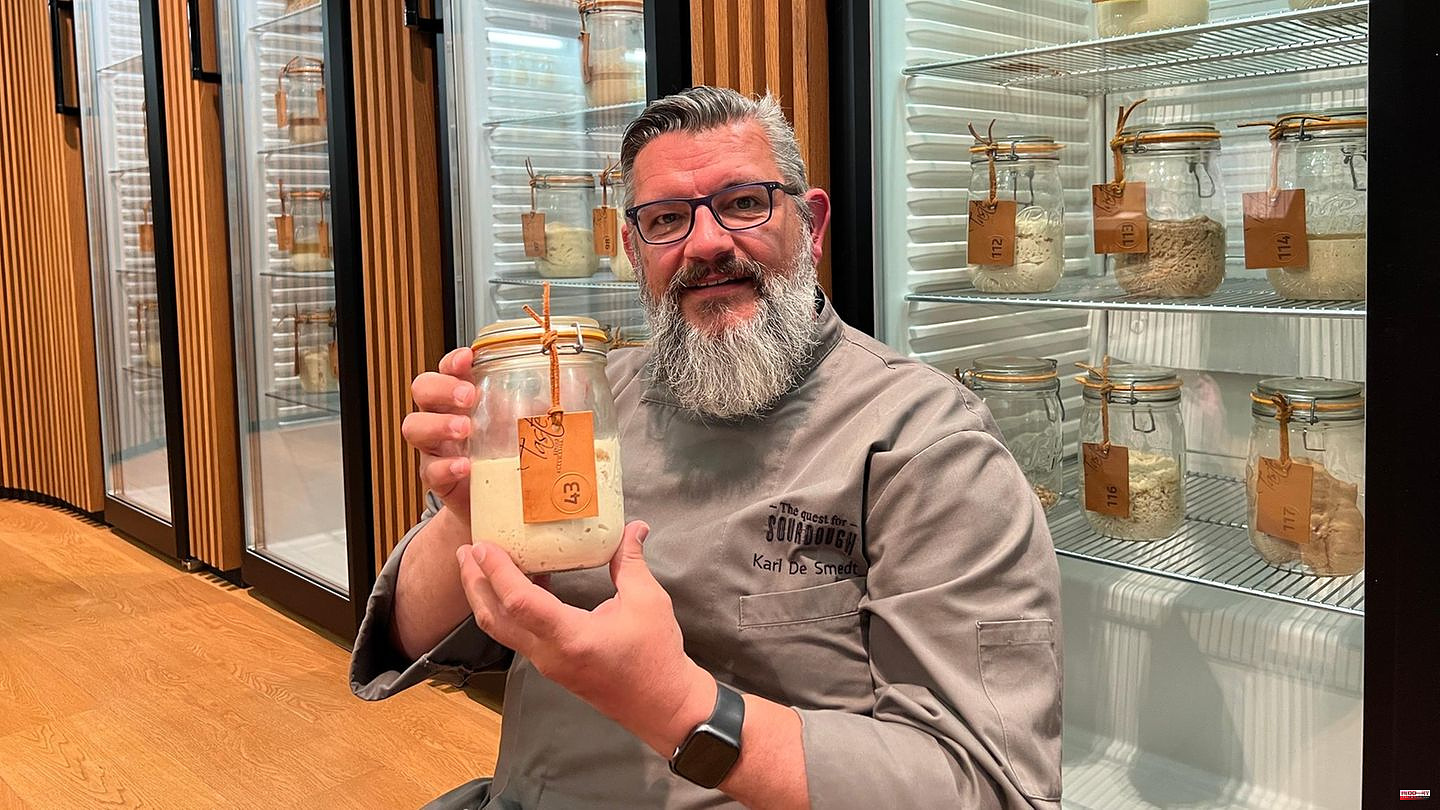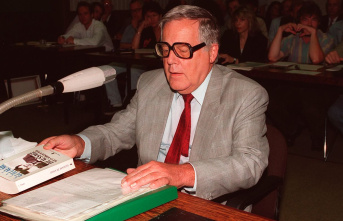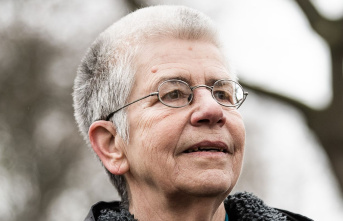No sourdough looks like the other. One is whitish liquid, the other yellowish lumpy, and a third light brown, riddled with blisters. In jars and numbered, they stand neatly behind glass doors in refrigerators in the world's only sourdough library in St. Vith in East Belgium. As the keeper of the dough, Karl De Smedt has collected exactly 144 sourdoughs from 28 countries. "Each sourdough is unique," he says.
This is due to the original ingredients, but above all to the microorganisms that have developed in the sourdough. And sometimes for centuries. "Number 100 is a Japanese sourdough from 1875," says De Smedt, pulling out the jar. "It's quite runny. It's the only one made from boiled rice." Like all the doughs that made it into the chosen circle in the library, he has a special story.
"It comes from one of the last samurai in Japan," says the librarian, a trained confectioner and chocolatier. At that time, Kimura-san had practically retrained and had the art of baking explained to him by a Westerner. "There was no access to yeast back then, so he made sourdough bread and he found the right flavor." The dough is still used for baking in Japan today.
The collection includes sourdoughs from Italy, Greece, China, Australia, Dubai, Singapore, Turkey, Switzerland and Brazil. There are five specimens from Germany, including one from Stavenhagen (Mecklenburg-West Pomerania) from 1941. "We are researching the biodiversity of sourdoughs. Only doughs that were created through spontaneous fermentation are included," says De Smedt. So none based on a commercial starter culture. "We know exactly what's in the starter cultures."
The "Winfried Schmitz" sourdough from Daleiden in the Eifel has also been in the refrigerators since November 2022. It has the number 138. The sourdough is as old as the bakery - around 125 years, says Manuel Schmitz. "We still make our bread with it today," says the 42-year-old.
The fact that the Eifel dough was included in the sourdough library a few kilometers from the German border is "an honour," says Schmitz. But it is also a safeguard for the family business. If the bakery should disappear due to an environmental disaster or some other misfortune, you can always fall back on the dough in St. Vith. "It's probably archived there for research purposes."
The library started almost ten years ago in October 2013. De Smedt carried out a study on the biodiversity of Italian sourdough for the Puratos bakery. Then a call for help came from a baker in Lebanon. He was afraid that his sourdough, which he made from fermented chickpeas, would be lost. Because his sons, who took over the bakery, wanted to switch to baking bread with yeast.
"We already had 43 sourdoughs. That's when we came up with the idea of founding a library, also to preserve the doughs," says the 52-year-old. Also as a "backup". This has already proven itself once, says De Smedt. In 2021, a baker from Copenhagen called Denmark because all the mother sourdough had accidentally been used for baking. "I then sent him some of his dough. He was very happy."
Every day, De Smedt receives inquiries from dough owners who want a place in the twelve refrigerators in St. Vith. "We take on 20 to 25 new ones every year." Two are brand new from a monastery on Mount Athos in Greece - including one made from flour, which is made according to a 1000-year-old tradition. "This is a special dough because the place is isolated."
The variety of sourdoughs always fascinates De Smedt, who suffers from a rye flour allergy. There are Greek doughs that have been prepared with water soaked in basil. One from Mexico is made with beer, eggs and lime. A Swiss recipe started with a grated apple. And number 108 from Italy used water with dried cow dung. There are many microorganisms in cow dung, which in the filtered water help the dough to be more digestible, he says.
When new dough is received, the bacterial culture is first analyzed at the University of Bozen in Italy. "We have already been able to identify 1,500 different strains," says the expert. These would be stored safely at minus 80 degrees. "Just like the seeds of important crops are in the seed bank in Spitsbergen," he says.
The 500 grams in the airtight jars in the refrigerators are "fed" every two months. Then De Smedt and his team of helpers take 20 grams from each glass and refresh the dough in three stages with flour and water - until it is 500 grams again.
According to De Smedt, the tradition of sourdough is probably more than 10,000 years old. "We don't know where it comes from." However, it is known for sure that the ancient Egyptians had sourdough bread. "They wrote down with hieroglyphs that they fermented beer and bread."
The Sourdough Library is not open to the public. But you can visit them virtually, says De Smedt. "There are no secrets. What we find, we share." What does he wish for the future? "I'd like to spend more time with the sourdough." He is thinking about intensively examining 15 sourdoughs at a time. "I would bake with them, follow their development and try to find out as much as I can about them." And then make the next batches.












